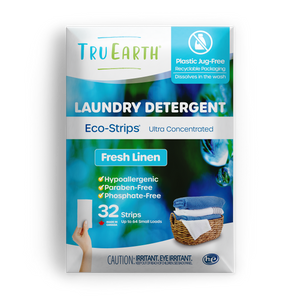In our quest to live more sustainably and reduce our exposure to harmful chemicals, making our own natural bug repellent is a practical and eco-friendly solution. Using simple ingredients and essential oils, you can create an effective and non-toxic bug repellent that keeps pesky insects at bay while minimizing your environmental impact.
This guide will explore the benefits of using natural bug repellents, discuss essential oils with insect-repelling properties, provide step-by-step instructions on making your own bug repellent, and offer tips for safe and sustainable bug protection.

Understanding the Benefits of Natural Bug
Repellents
Using natural bug repellents offers a range of benefits, both for your health and the environment. Here are some reasons why!
Non-toxic Protection
Natural bug repellents are free from harmful chemicals like DEET, which is commonly found in conventional insect repellents. Opting for natural alternatives reduces your exposure to potentially hazardous substances.
Environmental Friendliness
Many chemical-based bug repellents contain ingredients that can harm the environment. By making your own natural repellent, you can ensure that the ingredients are biodegradable and won't contribute to water or soil pollution.
Customization
Creating your own bug repellent allows you to tailor the formula to your specific needs. You can choose the scents you prefer, experiment with different oils, and adjust the strength of the repellent based on the insect activity in your area.
Essential Oils with Insect-Repelling Properties
Certain essential oils are known for their natural insect-repelling properties. Here are a few examples.
Citronella Oil
Derived from citronella grass, citronella oil is a popular natural repellent for mosquitoes and other flying insects. Its strong scent masks attractants that mosquitoes are drawn to, making it an effective deterrent.
Peppermint Oil
Peppermint oil has a refreshing scent that repels mosquitoes, ants, spiders, and other insects. Its strong aroma disrupts the insects' sensory receptors, discouraging them from entering your space.
Lemongrass Oil
Lemongrass oil has a pleasant citrus scent and acts as an effective repellent against mosquitoes, ticks, and fleas. Its natural compounds create a barrier that insects find unappealing.
Lavender Oil
Lavender oil has a calming aroma and acts as a deterrent for mosquitoes, flies, and moths. Its fragrance repels insects while providing a relaxing ambiance.

DIY Natural Bug Repellent Recipe
Step 1: Gather the Ingredients
To make your bug repellent, you'll need the following ingredients:
- ¼ cup of witch hazel
- ¼ cup of apple cider vinegar
- 40-50 drops of essential oils (such as citronella, peppermint, lemongrass, and lavender)
- A small spray bottle
Step 2: Mix the Ingredients
In the spray bottle, combine the witch hazel and apple cider vinegar. These ingredients act as a base for the repellent, helping to dilute the essential oils and provide a gentle application on the skin.
Step 3: Add the Essential Oils
Add 40-50 drops of your chosen essential oils to the spray bottle. You can adjust the number of drops based on your personal preference and the strength of the scent.
Step 4: Shake Well
Secure the spray bottle's cap and shake the mixture vigorously to ensure the essential oils are evenly distributed throughout the solution.
Step 5: Test and Apply
Before applying the repellent to your skin, perform a patch test on a small area to check for any potential allergies or sensitivities. If no adverse reactions occur, you can safely apply the bug repellent to exposed skin, avoiding the eye area.
Tips for Safe and Sustainable Bug Protection
Timing is Key
Avoid peak mosquito activity times, which are usually dawn and dusk. If you must be outdoors during these periods, take extra precautions and reapply your bug repellent more frequently.
Dress Appropriately
Cover exposed skin by wearing long sleeves, pants, and socks to minimize the surface area for insects to target. Opt for light-colored clothing, as mosquitoes are often attracted to dark colors.
Consider Natural Barriers
Create natural barriers in your outdoor space by planting insect-repellent plants such as lavender, lemongrass, and citronella. These plants release fragrances that help deter insects.
Proper Storage
Store your bug repellent in a cool, dark place to preserve its effectiveness. Remember to label the bottle with the ingredients and date of creation for future reference.
Keep Those Bugs Away This Summer!
By making your own natural bug repellent, you protect yourself and your loved ones from pesky insects and contribute to a more sustainable lifestyle. Natural bug repellents offer an effective and eco-friendly alternative to chemical-based products, reducing exposure to harmful substances and minimizing environmental impact.
With a few simple ingredients and essential oils, you can create a personalized bug repellent that suits your preferences and provides safe and reliable protection. Embrace the power of nature and enjoy the outdoors without the annoyance of bugs, all while promoting a greener and healthier planet.


